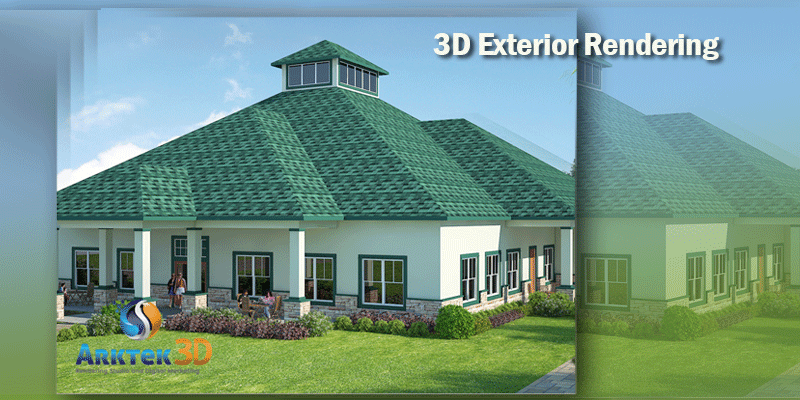Landscape renderings aid the designers in exploring the natural outdoors while allowing the architects to understand the way it shall harmonize with architectural roads and buildings. 3D exterior rendering for landscape architecture helps create innovative designs and communicates the same with use of technology. These creative ideas enhance the interim balance amid the environment with regards to the social behaviour among the residents of the area.
Landscape architects with use of 3D architectural exterior rendering can transform any object into something which is connected naturally with the surroundings. This involves intense work and understanding of nature as opposed to simple pickings for trees or plants.
What does the 3D landscape architect actually accomplish?
A landscape designer or architect works with key aspects of an architectural project while focusing on addition of natural elements which include patio, man-made garden, courtyard, rooftop deck, and so on. Architects can alter the naturally occurring elements with use of wooden walls or concrete while creating sitting areas or pedestrian paths through the entire yard. 3D exterior rendering architects can create a seemingly natural experience surrounding the soulless building while adding life to the landscape.
Things to remember with 3D architectural exterior rendering for landscape
Color and Contrast:
If your 3D rendering process for the landscape lacks highlighting contrasts, color shades, or shadows, the final project might not be as easy to envision or read. To illustrate better, each landscape involves inclusion of different plant variants all throughout the subject area. This means visualizing different plans with a single shade of green or yellow might be challenging.
This issue with 3D exterior rendering for landscape can be overcome with help of various green shades that come specifically closer to the actual shade of the plant in real life. In major cases, there is a combination calculated with 3 color variants which introduces a sense of contrast. These variants include a base, highlight, and the shadow color.
Season/Daytime Color Variant:
The most aesthetically pleasing 3D architectural exterior renderings tend to consider the time and season at that point to create the perfect contrast and color combination. With transition of seasons, we can see trees changing colors such as green to red, yellow, or orange. If you are a landscape renderer, it is important that you take note of the season you want to represent with the project.
The use of color also helps differentiates things in night-time renderings which include up-lights or spotlights.
Size/Shape of Plants:
An impressive 3D exterior rendering for landscape always showcases every small detail of the greenery used to craft the natural look. This includes everything from the direction of the leaves/branches to the overall shape of the plant.
While some trees might grow their branches at a 90 degree angle with the main trunk, others might grow the branches at a 45 degree angle. This branch expansion angle can heavily impact the way you observe a shadow in the adjoining area. A chunk of the modern-day rendering software allows you to pick the required shape or size of the plant, leaf, flowers, or trunk. The algorithm automatically brings to life the combination your programmed and adds in to the project.
Layering:
Each plant variant plays a significant role in bringing to life the perfect landscape. Normally, 3D landscape rendering plants tend to fall in the given categories which start with:
Ø Tall trees including deciduous and evergreen variants
Ø Ornamental ones that bear fruit and flowers
Ø Shrubs that include deciduous, evergreen, and flowering variants
Ø Grasses, sedges, and flowers of varying breadth and height
Ø Ground covers
As a designer, you cannot simply put the trees and plants wherever you desire. Layering is the key to bring to life the perfect design for 3D exterior rendering for landscapes. Start with tall trees at the background with scrubs acting as the 2nd layer scattered all around the property borders creating an intricate landscaping. Low-lying scrubs help fill the left over space between the lawn and surrounding areas. Last but not the least, the ground covers and edges are covered with flowers and grasses.
Conclusion
Landscape architecture paired with the technologically advanced 3D architectural exterior rendering has altered the way a layman used to invest in architecture projects. A well-designed landscape rendering software with use of 3D technology can enhance a designer’s possibility to create eye-pleasing surroundings.
If you are someone who loves the perfect combination of nature with man-made cement jungle, investing in 3D exterior rendering for landscape is something to checkout. At ArkTek3D, we craft some of the most beautiful renders with natural and man-made facilities balanced in the perfect way. To know more about our architecture rendering services, get in touch with us at 904-377-7088 or write to us at info@arktek3d.com.

